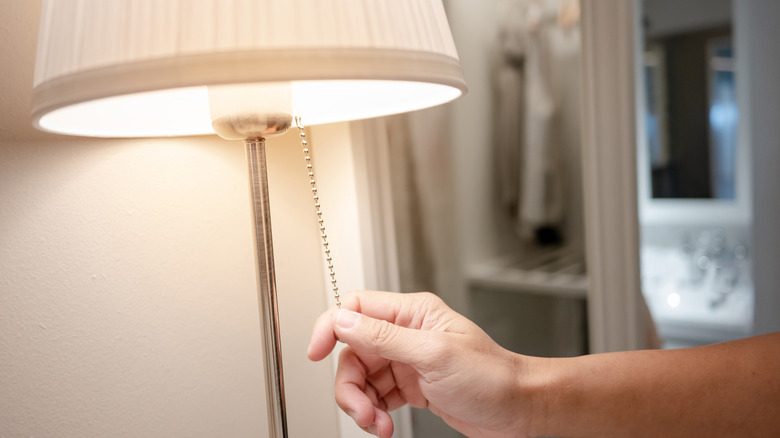Is It Important To Turn Off LED Lights When Leaving The Room?
LED (light-emitting diodes) bulbs are a modern, energy-efficient lighting option that can use up to 90% less energy and last 25 to 50 times longer than traditional incandescent bulbs. Utilizing technology that focuses the light in more concentrated ways, and thus uses less energy, LED bulbs are low-heat, and low-UV-emitting light sources. Free of polluting materials that older models of lightbulbs are notorious for being manufactured with, overall, LED bulbs are far more environmentally friendly. These qualities are just a few among the many that make LED bulbs a better option than regular light bulbs in a modern home.
However, an LED light still consumes electricity when it's turned on, and though it produces electricity in more efficient ways, an LED bulb that remains on for long periods of time can shorten the bulb's lifespan. This may be one reason why your LED bulbs aren't lasting as long as advertised. Beyond "burned out" bulbs, keeping your LED lights on also burns unnecessary electricity. While the energy drawn by a single LED light is likely minimal and leaving one on for a while may not break the bank, leaving several on for long stretches of time across your home can cause your electricity bill to rise over the months and years. While the numbers may feel minimal, in the long run, the pennies will add up. Turning off LED lights when they're not needed is a simple way to reduce energy use and lower costs.
How much do you actually save when turning off LED lights?
Calculating how much money your LED light bulbs are costing you on your electricity bill depends on several factors, including how much per kilowatt hour (kWh) your energy provider charges you, what wattage light bulb you're using, if you're dimming the bulb, and what shade of bulb you have (i.e., soft white versus warm lights). The formula of cost is simple: Billed cost = (bulb wattage x Hours Used ÷ 1000) × kWh rate, with the 1,000 figure calculating how much energy a particular wattage consumes.
To illustrate, let's say you use a 10W, warm light, LED bulb, and your electricity provider charges $.15 per kWh. To run a single LED bulb for eight hours, you're looking at a cost of $.012 per day. However, if you run the same bulb all day, your cost increases to $.036 per day. Doesn't sound all that expensive, right? Well, if you think of running ten LED bulbs all day, every day for a month, then your bill will come out to be a little over $11. For eight hours per day, the cost is under $4 per month for those ten bulbs.
While a $48 annual electric bill for your lights feels downright cheap, $132 per year can start to feel a little frivolous, especially when that means you're using electricity that's not necessary. Even if the cost feels bearable, the best practice remains the same: turn off lights when you don't need them. It conserves energy, helps bulbs last longer, and can reduce overall costs.

